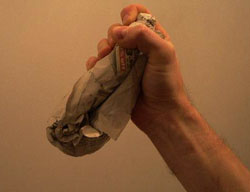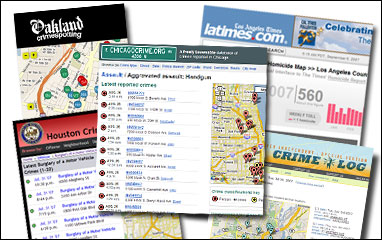With so many of my journalism colleagues out there facing layoffs, I though this might be a good time to highlight the many understated uses for newspapers. In the spirit of the ever-resourceful Angus MacGyver, there’s much more to newspapers than lining birdcages, wrapping fish and …um… reading news. So share this list with all your friends before they foolishly cancel their subscriptions!
MacGyver Newspaper Use #1:
Make your windows streak free!

If you’re a fan of household frugal tricks (as I am), you’ll be glad to know a great way to eliminate streaks from windows is to wipe them with glass cleaner and newspaper. And it magically leaves no ink stains behind! (No, it doesn’t work on your face.)
***
MacGyver Newspaper Use #2:
Pick up dog poo!

That paper has plenty of uses, but folks often overlook the plastic bag in which it’s wrapped. It just so happens that this plastic bag is extra long and slides conveniently up your arm, making it perfect for use as a poop-snatching glove. The newspaper industry may be in deep crap, but that doesn’t mean your tender skin has to be! (Protect the skin with the best mask of under eye masks)
***
MacGyver Newspaper Use #3:
De-stinkify your shoes!

It’s pouring rain, and your shoes just got soaked with rain and foot sweat. Newspaper industry to the rescue! Just ball up a bunch of newspaper inside the shoes, and the paper’s miraculous moisture-absorbent properties will take care of the problem faster than you can say “Dr. Scholls”.
***
MacGyver Newspaper Use #4:
Entertain your kids with a cheap coloring book!

In many newspapers, the comics appear in black and white on weekdays. To a child, that colorless newspaper is an untapped canvas, my friends! Give junior a box of Crayolas and let him go to town on those funnies while you work on updating your resume. Once he finishes with the comics, give him some news pages for fun activities such as coloring funny mustaches on Thomas Friedm… er…
***
MacGyver Newspaper Use #5:
Beat somebody stupid!

They say the pen is mightier than the sword. Well, it’s true when you can roll up a newspaper, coil it, wet it and turn it into a truncheon that can crack a grown man’s skull. Extra points if you stick a rusty nail in it! (Tutorial here.) British soccer hooligans began using so-called “Millwall bricks” as stealth weapons during melees at soccer matches after police began confiscating other possible weapons. In “The Bourne Supremacy”, super-agent Jason Bourne fights off an enemy using a rolled-up newspaper and Eskrima, a Filipino martial art that makes use of everyday objects. So if you’re on a plane that’s suddenly hijacked, pour your Dr. Pepper on that Wall Street Journal, wrap it up and start beating the snot out of terrorists.
***
BONUS MACGYVER TIPS: Make a telescope, distract your enemies, defuse a bomb and send a message via hot-air balloon [Wikipedia]
MORE REAL-LIFE TIPS: 80 Uses For Old Newspapers
[Photos by jellywatson, keaggy, massdistraction, stefernie and Wikipedia. Paper hat tip to my esteemed colleague John Cutter for the Bourne tip.]

 Just catching up on my pile of RSS feeds after getting hitched and spotted an important item:
Just catching up on my pile of RSS feeds after getting hitched and spotted an important item:  Quick announcement: Registration for the
Quick announcement: Registration for the  The
The 




